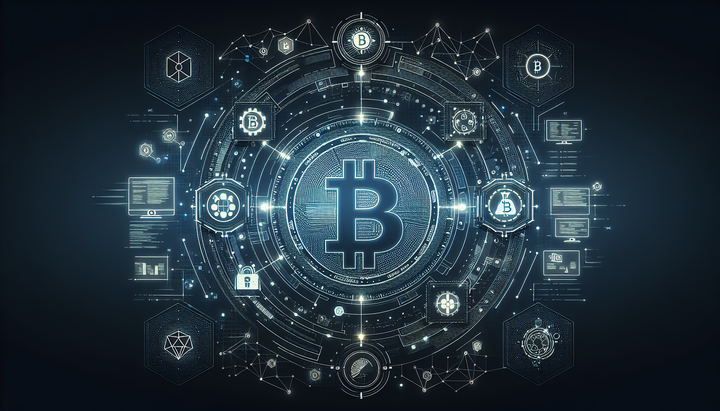Celebrities vs AI Copyright Abuse: Protect Creative Rights?

Introduction: The Clash of Creativity and Technology
The rapid evolution of artificial intelligence has stirred intense debates across multiple industries. Recently, more than 400 celebrities—spanning actors, musicians, filmmakers, and writers—united to sign an open letter protesting proposals that would allow AI companies to train their algorithms on copyrighted works without obtaining permission from rights holders. This unprecedented move not only reflects the deep-rooted concern among creative professionals but also symbolizes a broader struggle between technological advancement and the preservation of intellectual property rights.
In a world where AI is rapidly advancing, questions of how it intersects with copyright law are more urgent than ever. Big tech companies such as OpenAI and Google have argued that easing copyright restrictions would promote a 'freedom to learn' and strengthen America's competitive edge in AI development. However, creative communities warn that such policies could undermine the very foundations of innovation and cultural expression.
Background: The Proposal and Its Implications
At the heart of this controversy are submissions made to the Office of Science and Technology Policy. OpenAI and Google have put forward proposals stating that their systems should be allowed to ingest and learn from a diverse range of copyrighted content without requiring explicit approval or compensation for its use. Their reasoning rests on the belief that such practices would not only accelerate AI development but also protect national security by bolstering the United States' leadership in artificial intelligence.
Critics argue that waiving copyright protections jeopardizes the economic and cultural ecosystem that has been nurtured over decades. The creative sector, a vital contributor to the American economy, depends on well-established intellectual property rights to ensure that artists are fairly compensated for their work. The celebrities’ open letter goes further by emphasizing that easing these protections for AI research could lead to a devaluation of creative content, thus eroding the incentives for innovation and creative risk-taking.
Celebrity Involvement: Voices from Hollywood and Beyond
The open letter, addressed to the White House, is a strong rebuke against policies that could allow tech giants unfettered access to the creative industry’s vast repositories. Over 400 prominent figures, including Ben Stiller, Cate Blanchett, Paul McCartney, and Ron Howard, have lent their names to the cause. Their unified stance underscores a fear that America’s cultural pedigree might be sacrificed at the altar of technological progress.
These celebrities have historically been at the forefront of advocating for artists' rights, and their intervention in this debate comes at a time when technology is encroaching on traditional creative spaces. The letter proclaims: "We firmly believe that America's global AI leadership must not come at the expense of our essential creative industries." This sentiment resonates deeply with those who rely on the legal frameworks of copyright to safeguard their economic and artistic contributions.
The Impact on America's Creative Industries
The potential ramifications of the proposed policy changes extend far beyond the realms of technology. America's entertainment industry supports approximately 2.3 million citizens and generates hundreds of billions in wages annually. It also serves as a cornerstone of American soft power on the global stage. Weakening copyright protections, supporters contend, could destabilize this well-established system and undermine the very spirit of creative expression.
Key issues raised by the open letter include:
- Economic Viability: The creative sector not only sustains millions of livelihoods but also drives significant revenue through intellectual property. Eroding these protections risks destabilizing the economic model that funds artistic innovation.
- Quality of Creative Content: Copyright protections incentivize high-quality creative work by ensuring that creators receive recognition and compensation for their contributions. Undermining these incentives might lead to a decline in artistic quality over time.
- National Influence and Identity: America's cultural exports are a testament to its innovation and creativity. A diminished copyright framework could impair its global cultural influence, making it harder to compete with nations that prioritize state-controlled technological advancement.
Furthermore, the open letter highlights that the benefits provided by a robust copyright regime have historically been integral to the American success story in the creative economy. The celebrities assert that any policy shift must carefully balance the need for technological progress with the imperative to protect the creative arts.
International Perspectives: The UK and Global Reactions
The controversy is not confined to the United States. In the United Kingdom, similar debates have emerged over proposals that would permit AI companies to access any material available to them legally, with the option for creators to opt out of such use. This approach has sparked criticism from various quarters, with many arguing that an opt-out system is inherently unfair and overly burdensome for individual creators.
In one striking example of international protest, over 1,000 UK-based musicians—including Kate Bush, Tori Amos, and Annie Lennox—released a silent album titled Is This What We Want? to voice their opposition. The album, comprised entirely of recordings of empty studios and silent performance spaces, symbolizes a poignant resistance against the commodification of art through technology. Additionally, UK newspapers have featured the slogan "Make It Fair" on their front pages, reflecting widespread public sentiment.
This global dimension underscores that the issues of copyright in the age of AI are not confined by national borders. As technology continues to evolve, aligning international copyright laws with the rapid pace of AI development becomes an essential, yet exceptionally challenging, task.
Technological Trends and Policy Challenges
In the realm of emerging technologies, several trends intersect with this debate. For instance, the rise of decentralized AI, AI-generated programming, and even neuromorphic computing are transforming the landscape of digital innovation. While these advancements promise efficiency and scalability, they also introduce new challenges for established legal frameworks.
Key challenges include:
- Balancing Innovation and Regulation: Governments and regulatory bodies must tread carefully to avoid stifling innovation while ensuring that creators’ rights are not infringed upon. This balancing act is critical as AI continues to integrate into sectors traditionally protected by intellectual property laws.
- Defining Fair Use in the AI Context: Traditional fair use doctrines are under strain as AI systems require vast amounts of data to learn and evolve. Determining when and how copyrighted material can be used without permission is a complex legal conundrum that demands novel interpretations of existing laws.
- Ensuring Global Standards: As nations like the US and UK explore different approaches to AI training, a lack of harmonized international standards could result in a fragmented regulatory landscape. This fragmentation might encourage tech companies to operate in jurisdictions with the most lenient rules, potentially exacerbating the problem.
Moreover, many experts argue that public policy should promote transparency in AI training methodologies. By mandating that companies disclose the sources of data used to train algorithms, it may be possible to create a system that both fosters innovation and respects the rights of content creators.
Case Studies and Research Insights
Several studies have underscored the ramifications of unrestrained AI training practices. Research published in reputable sources such as IEEE and MIT Tech Review suggests that granting AI unrestricted access to copyrighted content could impair long-term innovation in creative industries. For example, an IEEE whitepaper noted that similar policy relaxations in other sectors had previously resulted in diminished returns for original content creators.
Case studies from both the United States and the United Kingdom provide vivid illustrations of these concerns:
- The Hollywood Impact: In Hollywood, creative professionals have reported that the erosion of copyright protections might lead to a devaluation of their work. This, in turn, could reduce overall investment in new projects, thereby stifling creative output.
- The UK Experiment: In the UK, early assessments of the opt-out proposals indicate a high degree of resistance among individual creators, who fear that new policies could leave them with little control over the use of their intellectual property.
These insights reinforce the idea that a cautious, balanced approach is necessary to ensure that technological innovation does not come at the cost of artistic integrity and economic stability.
The Road Ahead: Navigating a Complex Intersection
Looking forward, the dialogue between technological proponents and creative industries is expected to intensify. As policymakers deliberate over proposals from influential companies like OpenAI and Google, several potential scenarios could unfold:
- Enhanced Regulatory Frameworks: One outcome might be the establishment of clearer guidelines that define acceptable uses of copyrighted materials in AI training, ensuring fair compensation for creators while still allowing technological advancement.
- Technological Adaptations: AI companies might be compelled to develop more sophisticated data acquisition techniques that respect copyright boundaries, potentially through innovative licensing agreements or more robust data curation practices.
- International Collaboration: Given the global implications of these issues, international regulatory bodies may need to step in to harmonize standards, ensuring that creative rights are upheld irrespective of national jurisdictions.
Experts in both technology and intellectual property law suggest that fostering a collaborative dialogue between the creative and tech sectors is crucial. By engaging in open discussions and developing mutual understanding, it might be possible to devise strategies that harness the benefits of AI while safeguarding the rights of content creators.
Conclusion: Protecting Innovation and Creativity
The open letter signed by over 400 celebrities is not merely a protest against a specific policy change—it is a broader statement about the value of creative work in the digital age. As AI continues to shape our world, the need to balance technological progress with the protection of artistic integrity becomes ever more critical.
While the debate is far from settled, this pivotal moment in history offers an opportunity to rethink the relationship between technology and creativity. By adopting measures that respect both innovation and intellectual property rights, society can strive towards an ecosystem where technology and art flourish in tandem. The coming months and years will likely see further discussions, legal challenges, and technological adaptations, all aimed at achieving this delicate balance.
Ultimately, the struggle over AI training and copyright is a microcosm of larger questions about the role of technology in society. It challenges us to consider how we value creativity, how we reward innovation, and how we can build a future that is both technologically advanced and culturally rich. In this evolving landscape, the voices of renowned creative professionals serve as a powerful reminder that progress should never come at the expense of the art that defines our humanity.
As consumers, policymakers, and technology enthusiasts, it is our responsibility to stay informed and engaged in these discussions. Only through collective effort and thoughtful dialogue can we hope to craft policies that honor the contributions of all sectors of society while embracing the transformative potential of modern technology.



Comments ()